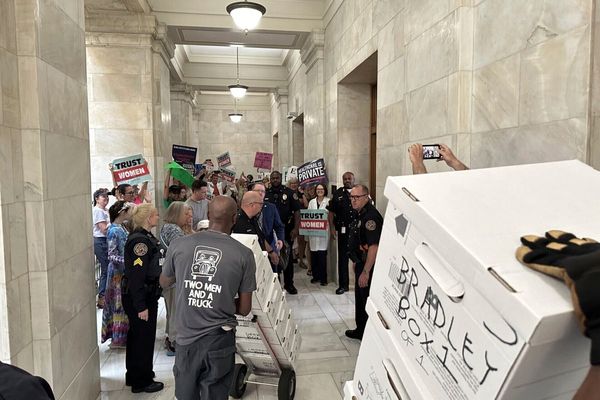Energy prices are rising faster than benefits, wages or pensions, meaning the amount that UK households owe to energy suppliers – their energy debt – is also likely to grow.
On April 1 2025, the energy price cap, which is the maximum amount suppliers can charge, will rise by 6.4%. This is the third consecutive quarterly increase, and a rise of 9.4% compared with the limit set the previous April, which amounts to an increase of £159 on the typical bill.
Meanwhile, benefits such as universal credit are being increased by only 1.7%, which will mean those on low incomes will find it challenging to pay for the energy they need. The increase is so low because, every April, benefits rise in line with the rate of overall inflation for the previous September.
State pension increases have outpaced increases to working age benefits due to “the triple lock”, which ensures annual increases are pegged to the highest of earnings growth, inflation or 2.5%. Nonetheless, the state pension is set to rise by only 4.1%.
Combined with the loss of the winter fuel payment (at least £200 a year) for all but the poorest pensioner households, the price cap rise will especially hurt those who are just above the threshold to receive pension credit.
People in low-paid work will fare slightly better. But still, the minimum wage rise of 6.7% for those over 21 in April 2025 will not keep pace with the 9.4% annual increase in energy prices. Essentials, such as energy, make up a greater proportion of spending for low-income households, so these price rises will have a greater impact here.
Energy debt highest since 2012
Energy regulator Ofgem reported those in arrears (without a repayment plan) owed an average of £1,568 for electricity and £1,324 for gas at the end of September 2024, an annual increase of 33% and 85% higher than debt levels in September 2021.
Even for those on repayment plans, debt remains high, having risen by two-thirds since the start of 2022. Record levels of energy debt – the highest since records began in 2012 – are inflating bills for all consumers, as energy providers seek to recover the cost of debt. This situation looks set to worsen, given that this data precedes price rises since October 2024.
Moving to a fixed rate or cheaper tariff with another supplier is not possible for those with more than 28 days unpaid energy bill debt. Households at risk of going into debt also tend to ration their energy use or self-disconnect. But living in a cold home risks damp and mould, which has severe health consequences.
Available help is not enough
The government is expanding the warm home discount scheme to make more households eligible for an annual payment of £150, but it is unclear at this stage who will benefit. The payment may not be enough, since price cap changes mean that from April 2025, average annual bills will be £159 more expensive. Crucially, energy debt repayments are not reflected in the government’s fuel poverty calculations.
The government urgently needs to introduce an effective debt relief scheme.
Ofgem has acknowledged that energy is essential for everyone and that disconnection has harmful consequences. It also recognises energy market failures prevent those with small debts from accessing better deals. The regulator recommends a debt relief fund of up to £1 billion to help vulnerable households that have been affected by the energy crisis and for suppliers to adopt consistent standards in handling and preventing debt.
Here’s are three ways the government can protect vulnerable households.
1. Store more energy
Renewable energy sources like wind and solar are intermittent, so demand won’t always match supply. In a marketised energy system, that means prices will be more volatile. However, a leading cause of high bills in the last few years has been the fact that Britain’s privatised system sets electricity bills according to the wholesale price of gas, which is often the most expensive energy source.
If the UK can create more energy storage options (such as batteries, pumped hydro and thermal storage), the grid can store excess green energy when it is abundant to use when it is needed. This would reduce price volatility and reliance on expensive gas.
Read more: How gas keeps the UK’s electricity bills so high – despite lots of cheap wind power
2. Insulate homes
Home improvements such as insulation and draught-proofing can help people spend less on energy for heating, which accounts for most of the cost of domestic energy bills. This needs to be combined with adequate ventilation to prevent damp and mould.
3. Cover medical energy costs
Since late 2024, energy pricing reform has permitted tariffs without a standing charge. This is an amount you pay on your energy bill every day, regardless of whether you use any energy. The change will benefit those who spend the least on energy. However, it won’t help people whose energy needs are higher due to health conditions, or who spend more time at home.
Older people, the disabled and those who are terminally ill will need more help, as highlighted by research I led on fuel poverty in the last year of life. Living in a cold home can exacerbate health conditions and cut lives short.
People who are dying are more vulnerable to cold and may need to use more electricity for medical equipment. Our research found that they are more likely to be in fuel poverty. For the terminally ill, home energy-efficiency improvements take time that they don’t have. Getting work done is disruptive. What these people urgently need is help with their bills.
End-of-life charity Marie Curie is campaigning for a social tariff which would provide cheaper energy for those who are terminally ill. It has asked the government for additional help to cover the energy costs of medical equipment, so that vulnerable people don’t fall into energy debt.
Incomes are failing to keep pace with rising energy prices and existing schemes to help those on low incomes fall well short. This will push more people into hardship. The government must put the needs of the most vulnerable first.
Don’t have time to read about climate change as much as you’d like?
Get a weekly roundup in your inbox instead. Every Wednesday, The Conversation’s environment editor writes Imagine, a short email that goes a little deeper into just one climate issue. Join the 40,000+ readers who’ve subscribed so far.
Elaine Robinson is a member of the Labour Party. She has received funding from Marie Curie.
This article was originally published on The Conversation. Read the original article.







